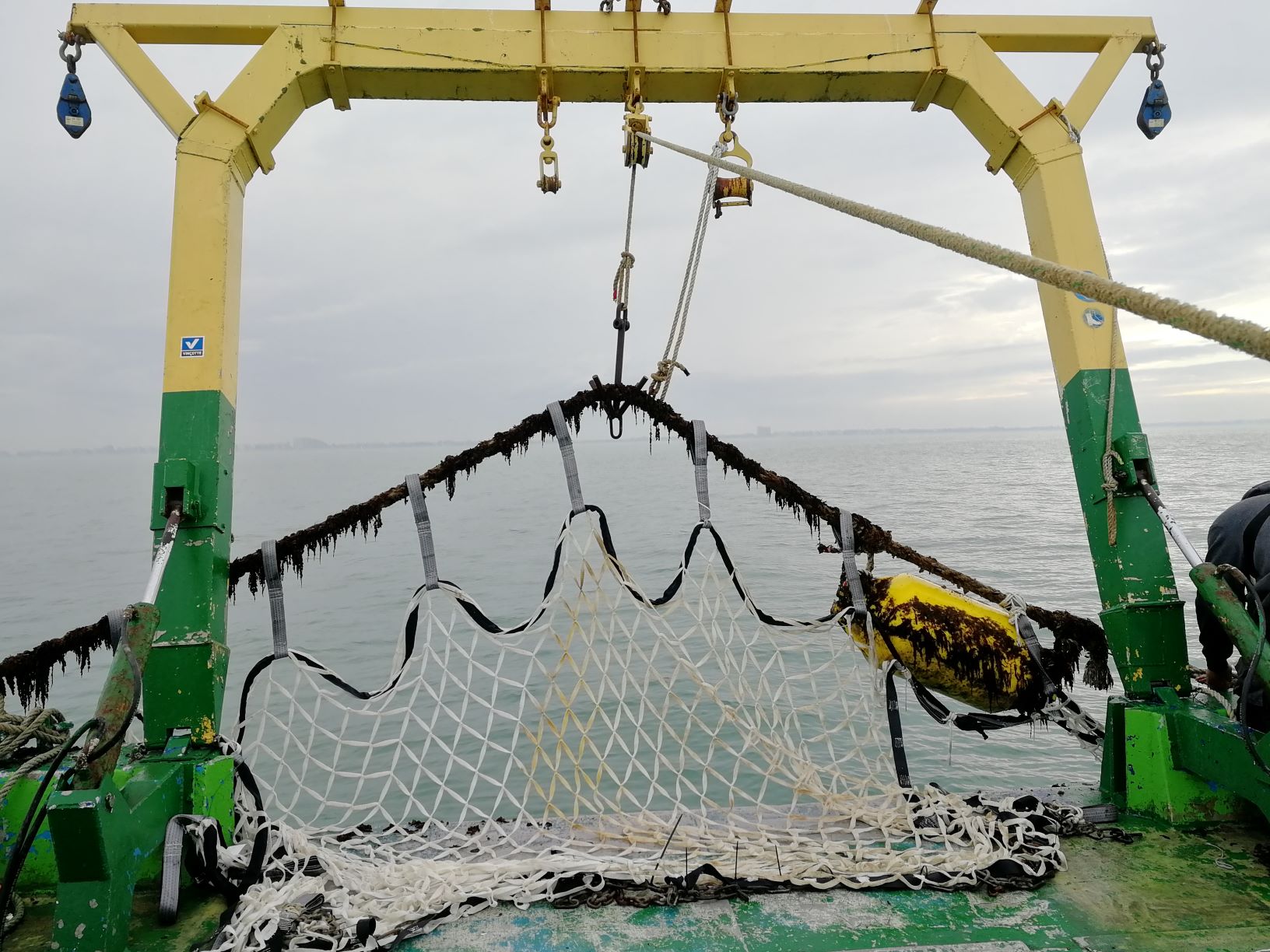A new crop in the sea: Seaweed cultivation in Belgian waters
With an ever-growing world population and demand in resources, seaweed cultivation is rapidly gaining momentum in Europe as a source for biological compounds used in various applications such as food, feed, cosmetics, fertilisers, pharmaceuticals or bio packaging. Besides the potential of seaweeds in many applications, its production does not require agricultural farmland, fertilisers or fresh water and can even have positive environmental effects by removing excessive nutrients and taking up CO2 from the water.
Seaweed farming – open sea versus land-based cultivation
Seaweeds can be successfully cultivated in open sea farms or in land-based tank cultivation systems depending on species and local conditions. Open sea cultivation offers the potential to grow extensive amounts of biomass, with no further input of fresh water, nutrients or other chemicals. In Europe, especially large kelps such as sugar kelp (Figure 1), are suitable candidates for open sea cultivation as they are robust enough to withstand the harsh conditions in the North Atlantic. However, the growth season for cultivated kelp in the North Atlantic is restricted to the cooler months, ranging from late autumn to spring, limiting the possible production window. Therefore, the short production window combined with the harsh conditions experienced in the North Atlantic limit the diversification of cultivable species in offshore environments.
Land-based cultivation of seaweeds, on the other hand, offers the opportunity to cultivate more delicate and higher value species in comparison to kelp. Depending on the system, land-based cultivation allows for complete control of the cultivation conditions, such as temperature, light and nutrient availability, enabling a year-round production under optimal growth conditions. A constant short supply chain with fresh and high-quality biomass will be of great importance for seaweeds to become a common crop for human consumption in Europe.
Moving forward
While there is a growing knowledge foundation for cultivating local seaweed species, these protocols need to be adapted and optimized for large-scale commercial land-based or open sea operation. A collaborative team of scientists from Ghent University (research group Phycology) and industrial partners aims to tackle some of these hurdles by optimizing cultivation parameters and investigating the technical and economic feasibility of both land-based cultivation of high-value seaweeds for human consumption on a commercial scale as well as open sea cultivation in Belgium – advancing an emerging sector in Europe.
The UGent Phycology team is part of the multi-national Horizon2020 project UNITED (multi-Use offshore platforms demoNstrators for boostIng cost-effecTive and Eco-friendly proDuction in sustainable marine activities). The Belgian pilot combines aquaculture and ecological restoration of European flat Oyster (Ostrea edulis) reefs with cultivation of sugar kelp (Saccharina latissima) in offshore wind farms. The aim is to determine the best feasible way for cultivating sugar kelp in the Belgian part of the North Sea. To do so, specifically designed nets (AtSeaNova, Belgium) were seeded with juvenile sugar kelp at the Marine Station Ostend (Flanders Marine Institute, Figure 2) and installed (Brevisco, Ostend, Belgium) 5 km off the coast of Nieuwpoort (Figure 3). Following the results from the nearshore experiments, the best practices will be applied to grow sugar kelp in the offshore wind farm of Parkwind in the following growth season 2021/2022.
Furthermore, the UGent Phycology team is involved in projects advancing land-based cultivation techniques of high-value seaweeds, such as the red alga Porphyra (Figure 4a) and Palmaria (Figure 4b). Within the BlueMarine3.Com project a team of three research groups from UGent and six Flemish companies aims to adapt existing hatchery protocols for seaweed, bivalves and (penaeid) shrimp – opening the possibility for local hatcheries to supply an emerging aquaculture sector in Belgium.




